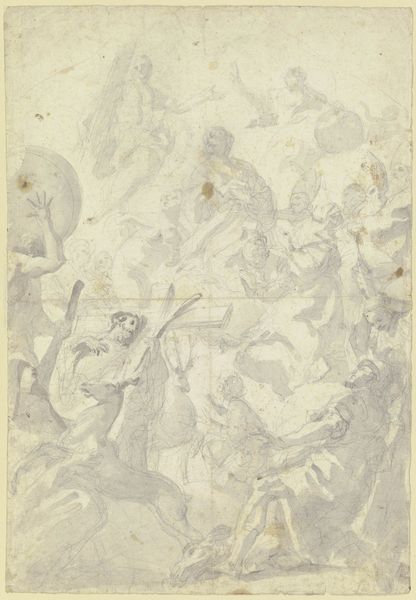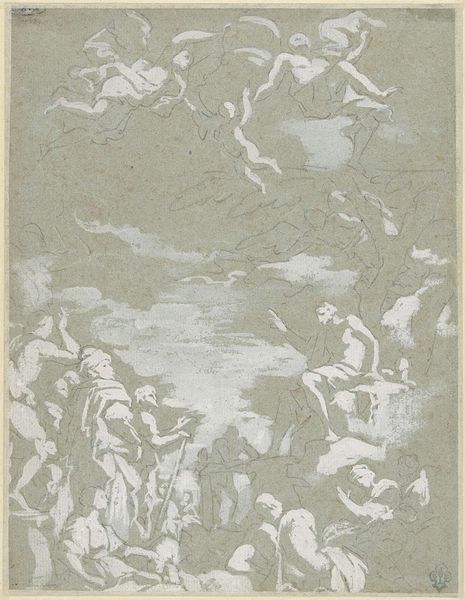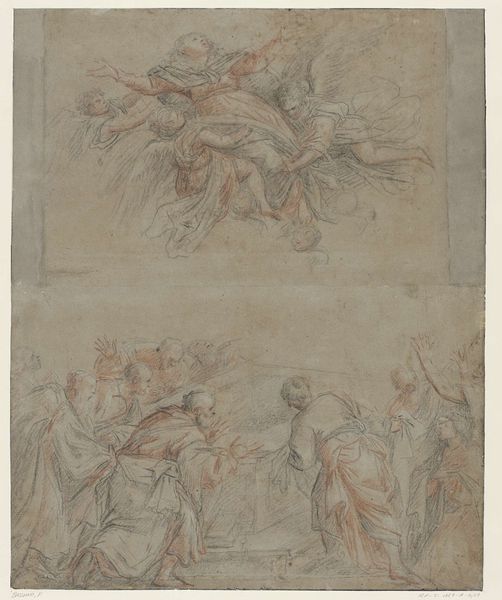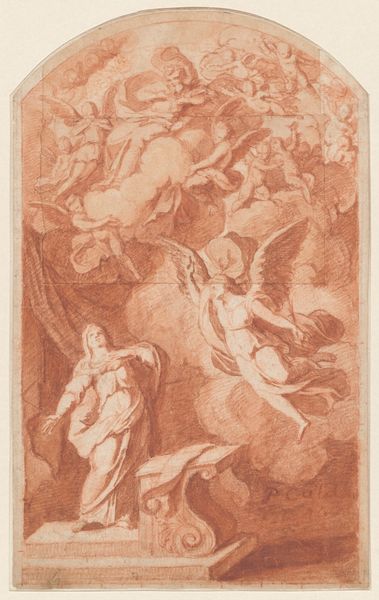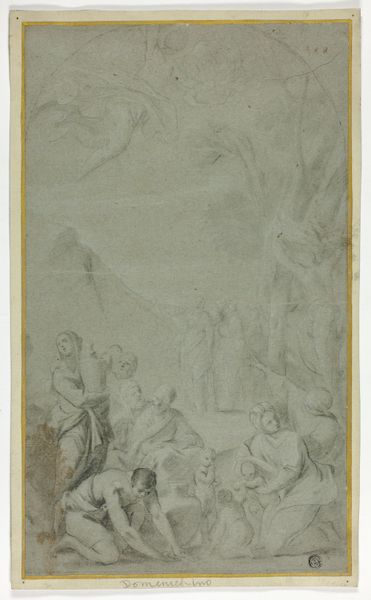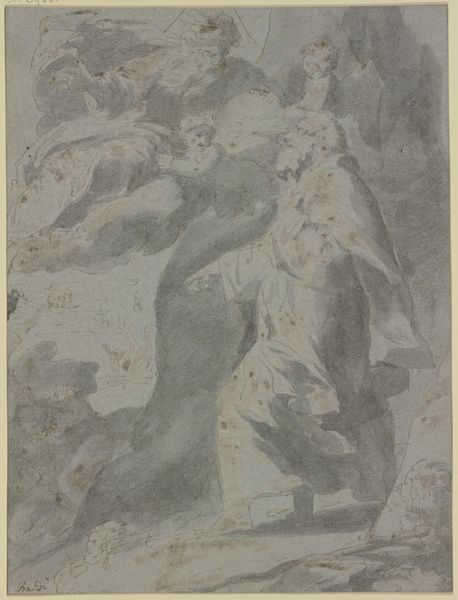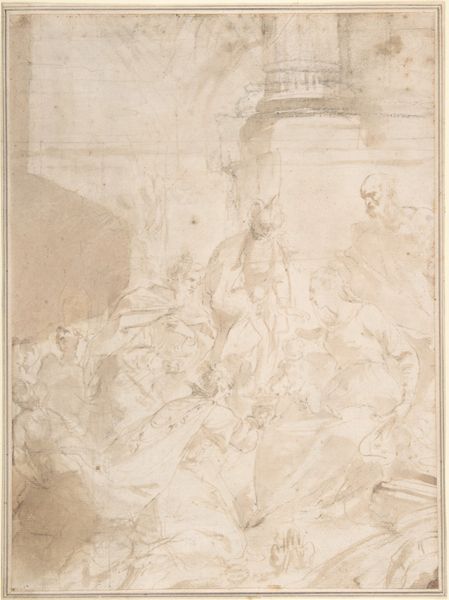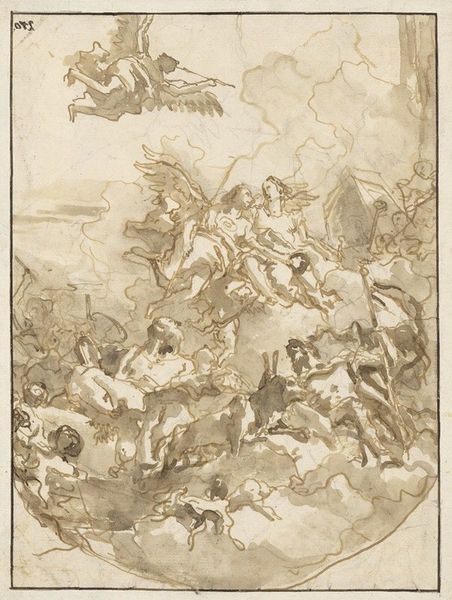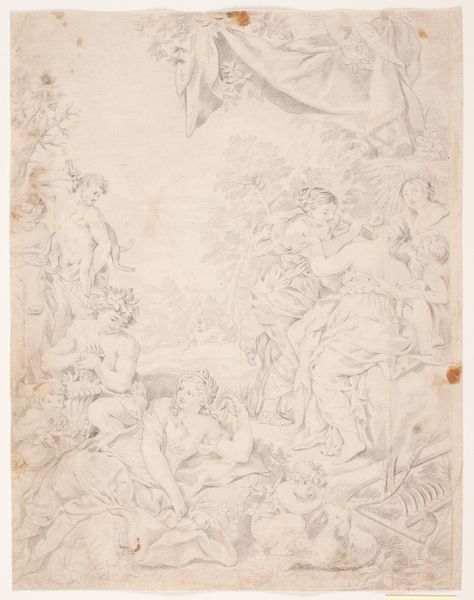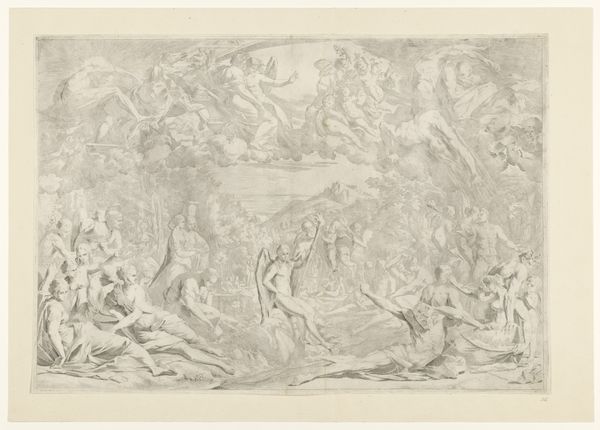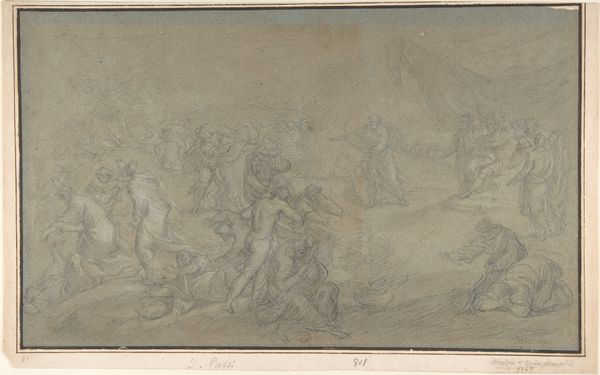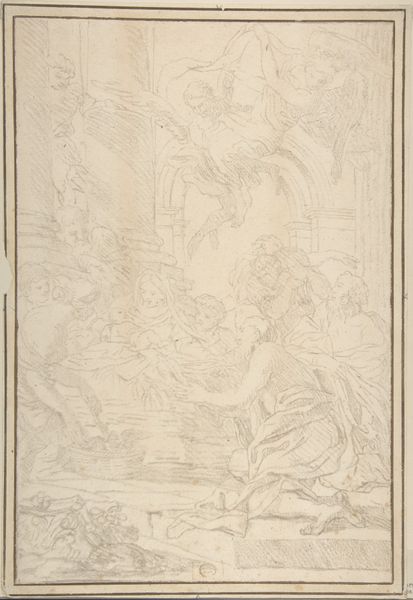
drawing, pencil, graphite
#
drawing
#
narrative-art
#
ink painting
#
figuration
#
pencil
#
graphite
#
history-painting
#
academic-art
Dimensions: height 149 mm, width 96 mm
Copyright: Rijks Museum: Open Domain
Editor: Here we have Hendrik Jacobus Scholten’s “Peinzende dame bij kaarslicht,” made between 1834 and 1907. It’s a drawing using pencil, graphite, and ink and, truthfully, it seems unfinished and chaotic. What do you see in this piece? Curator: Initially, the composition appears disorganized, yet a closer inspection reveals a complex arrangement of forms. Consider the deployment of line. Notice how Scholten uses a variety of strokes, from delicate and precise to broad and energetic, creating a dynamic surface. How do you see this affecting the overall unity? Editor: I see how the shading with pencil unifies it despite the linework changes. Still, the figures aren't well defined. They seem to be wrestling almost, maybe some sort of biblical fall from grace? Curator: Regardless of the narrative suggestion, focus on the structural aspects. The lack of precise figuration serves to emphasize the raw materiality of the medium. The interplay of light and shadow, rendered through the graphite, structures our gaze and leads it across the paper. Observe the areas of high contrast. Editor: Yes, it certainly is visually interesting. So, the unfinished nature is less about the story it might be telling, and more about the relationships between all these different types of marks? Curator: Precisely. The beauty here lies not in the literal depiction, but in the abstract relationships of line, tone, and the texture of the support itself. This invites a dialogue between the artwork's formal properties and the viewer’s subjective experience. Editor: I hadn't thought about it that way, I usually get caught up in the narrative elements. I'll try and pay more attention to the interplay between the medium and the marks on the paper. Thanks! Curator: An analytical approach helps reveal how the material's properties influence the reception. It's not just about what is depicted, but how.
Comments
No comments
Be the first to comment and join the conversation on the ultimate creative platform.
